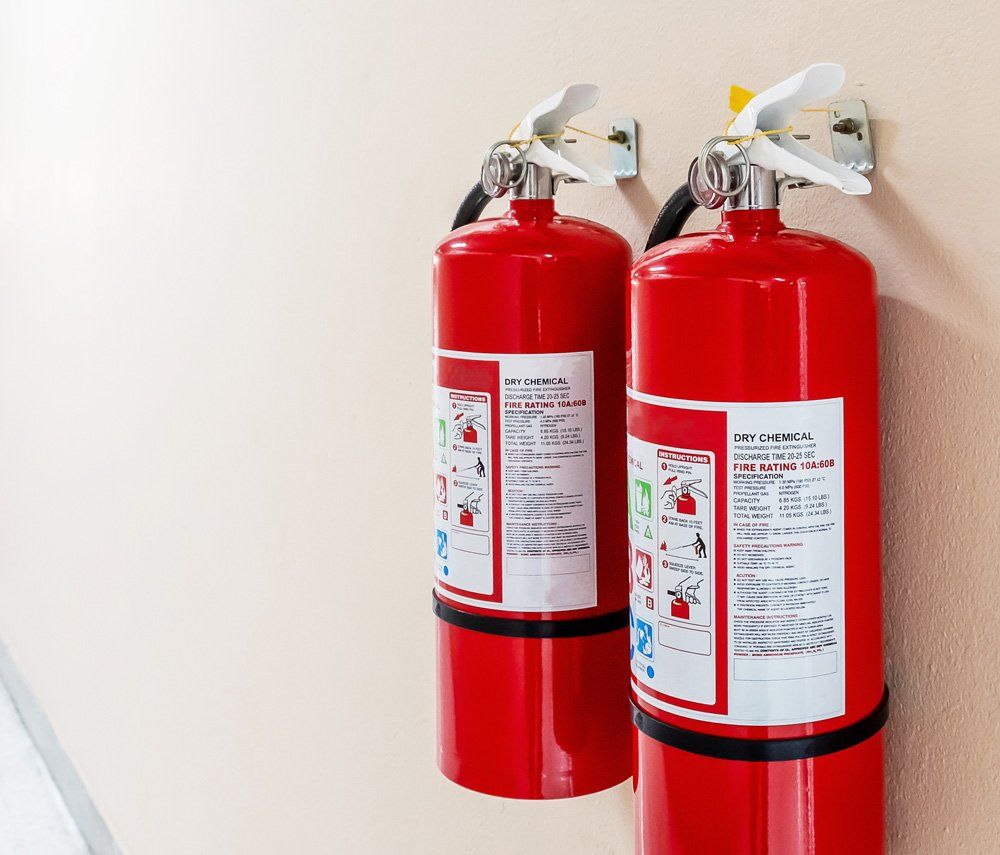Reliable Fire Extinguishers in Greater Sydney
Getting to Know the Fire Extinguisher
A fire extinguisher is usually made up of a handheld cylinder pressure vessel that has an agent in it that's designed to put out a fire. Eagle Fire Protection also offers some that are non-cylindrical, but these are less common. They are made to use in emergency situations.
A fire extinguisher is an active fire protection device used to extinguish or control small fires, often in emergency situations. It is not intended for use on an out-of-control fire, such as one which has reached the ceiling, endangers the user (i.e., no escape route, smoke, explosion hazard, etc.), or otherwise requires the expertise of a fire brigade. Typically, a fire extinguisher consists of a handheld cylindrical pressure vessel containing an agent that can be discharged to extinguish a fire. Fire extinguishers manufactured with non-cylindrical pressure vessels also exist but are less common.
The Different Parts
There are two main types of fire extinguishers: stored-pressure and cartridge-operated. In stored pressure units, the expellant is stored in the same chamber as the firefighting agent itself. Depending on the agent used, different propellants are used. With dry chemical extinguishers, nitrogen is typically used; water and foam extinguishers typically use air. Stored pressure fire extinguishers are the most common type. Cartridge-operated extinguishers contain the expellant gas in a separate cartridge that is punctured prior to discharge, exposing the propellant to the extinguishing agent. This type is not as common, used primarily in areas such as industrial facilities, where they receive higher-than-average use. They have the advantage of simple and prompt recharge, allowing an operator to discharge the extinguisher, recharge it, and return to the fire in a reasonable amount of time. Unlike stored pressure types, these extinguishers use compressed carbon dioxide instead of nitrogen, although nitrogen cartridges are used on low-temperature (-60 rated) models. Cartridge-operated extinguishers are available in dry chemical and dry powder types in the U.S. and in water, wetting agent, foam, dry chemical (classes ABC and B.C.), and dry powder (class D) types in the rest of the world.
Wheeled Extinguishers vs Handheld Extinguishers
Wheeled fire extinguishers and a sign inside a parking lot Fire extinguishers are further divided into handheld and cart-mounted (also called wheeled extinguishers). Handheld extinguishers weigh from 0.5 to 14 kilograms (1.1 to 30.9 lb) and are hence, easily portable by hand. Cart-mounted units typically weigh more than 23 kilograms (51 lb). These wheeled models are mostly found at construction sites, airport runways, heliports, as well as docks and marinas.
Which Fire Extinguisher Is Right for You?
Eagle Fire Protection provides many types of fire extinguishers. Class A extinguishers are often found in homes and are for combustible materials, while Class C is for electrical fires. What you will need depends on your area and the types of fires you will most likely encounter.
When Not to Use It
While it is always good, and often mandatory, to have a fire extinguisher in your building, there are times it is advisable not to use it. If the fire is out of control or endangers the user, then you should not attempt to put out the fire with the extinguisher and call the fire brigade instead.

